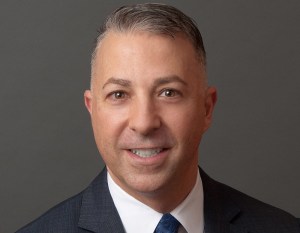Why Net Leases and Sale-Leasebacks Make Good Partners
A growing number of health-care businesses are discovering the benefits of long-term net leases, according to Ben Reinberg of Alliance Consolidated Group of Cos.
The net lease sector continues to experience an incredible run of investment sales, further compressing cap rates. This has led to a sellers’ market, leading more and more owner-occupiers to capitalize through sale-leaseback transactions.
The single-tenant net lease market saw nearly $103 billion in asset sales last year, according to research from commercial real estate brokerage Stan Johnson Company. This incredible transaction velocity has carried over into 2022. While the $21.6 billion of STNL investment sales in Q1 2022 was a precipitous drop from the $42.8 billion the market saw the previous quarter—spurred on by unprecedented sales activity at the end of the year—it’s still 30 percent higher than the year-earlier total of $16.6 billion.
The STNL hot streak comes in the wake of steadily compressing cap rates for these assets over more than a decade. Per Stan Johnson Company research, average cap rates fell from a peak of around 8 percent in mid-2010 to 5.84 percent in Q1 2022.
Net Lease by Sector
Net leases are fairly common in the industrial and office asset classes, though most STNLs are in the retail sector, segments of which have struggled during the pandemic. One bright spot for STNL and a frequent target for sale-leasebacks is health care.
Because the majority of net leases are structured as long-term agreements, health-care providers enjoy predictable expenses while ensuring they can remain in their facilities—where they’ve invested in hard-to-move equipment and are accessible to existing patients—for years to come.
Technological advancements have revolutionized the way health care is delivered, allowing for more services to be provided in outpatient settings. As providers ranging from large health systems to independent physician groups look to keep pace in a fast-changing industry, sale-leasebacks are emerging as a simple way to free up capital that can be reinvested into the business.
The Case for Sale-Leasebacks
Looking to capture as much of the action as they can before the market cools off, many owners—health care and otherwise—are eagerly disposing of their properties. There are many buyers just as eager to acquire, despite the higher prices. Since many owner-occupiers wish to remain in place and continue their business operations uninterrupted, the new owners can often negotiate a net lease with these in-place tenants, usually for extended terms.
Last October, Alliance Consolidated Group of Companies acquired a net leased health-care property in Lawrenceville, Ga. The $2.95 million transaction was a 15-year sale-leaseback with Gwinnett Pediatric Partners (GPP). As a result, organizations like the Atlanta Autism Center, a provider of autism spectrum disorder therapies for children and a subsidiary of GPP, will be able to continue delivering services in the same location without disruption. This was a true win-win agreement for both parties: Alliance acquired an asset with a long-term, quality tenant, while GPP received capital it can use to enhance the practice.
Alliance closed another such deal last year, signing Southwest Florida Oral and Facial Surgery in Cape Coral, Fla., into a long-term net lease after acquiring its property. According to Julie Simpson, CFO and executive director of the practice, her group used some of that capital to buy new equipment, with plans to eventually hire a new oral surgeon.
Some owners might also explore a sale-leaseback due to the tax benefits. While lease payments are fully tax deductible, property owners can only write off interest payments and depreciation.
In addition to offering financial perks, sale-leasebacks can relieve the stresses associated with building ownership. After all, most doctors don’t consider themselves landlords, and managing a property—or the third party tasked with this responsibility—can be burdensome if it pulls attention and resources away from the business. Dr. Randy Bottner, chief of cardiology at Memorial Medical Center in Savannah, Ga., said his group’s decision to do a sale-leaseback with Alliance was years in the making. As he and his partners approached retirement age, there was significant appeal in shifting the burdens of ownership to a third party while increasing their financial flexibility.
Sale-leasebacks can be an ideal strategy for companies looking to free up capital and reinvest in their business, all without having to move their existing operations. Given the increase in property values in many markets, investors can hedge when acquiring these assets by negotiating long-term net leases with their “new” tenants—an arrangement that time and again proves beneficial for both sides of each deal.
Ben Reinberg is Chief Executive Officer of Alliance Consolidated Group of Companies.








You must be logged in to post a comment.